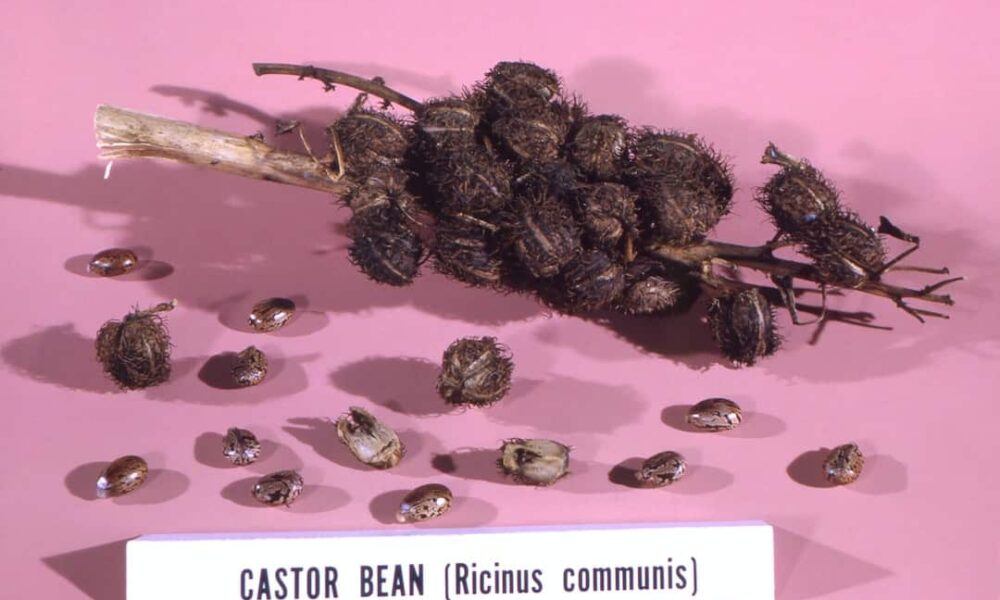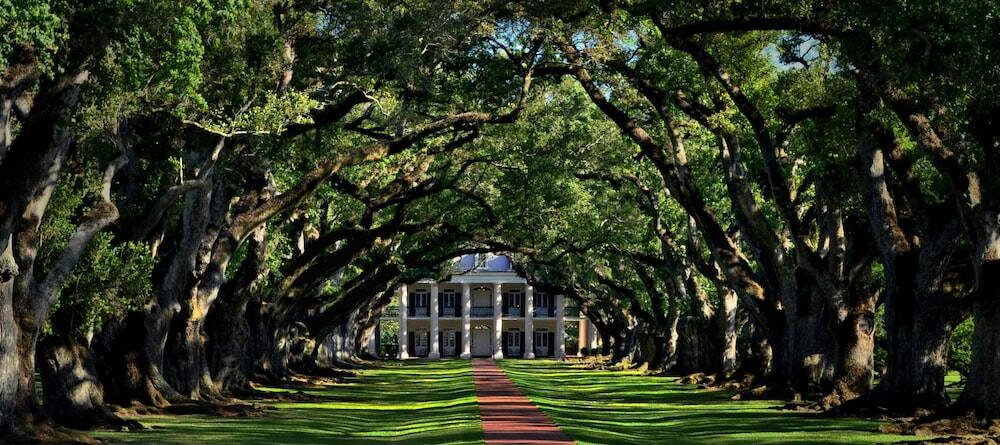Poison oak is a common plant found in North America that can…
Identifying Poison Sumac: A Guide to Avoiding the Itch

Poison sumac is a plant that can cause severe allergic reactions in humans. It is important to be aware of its presence and take precautions to avoid contact with it. In this article, we will discuss what poison sumac is, where it can be found, how to identify it, and the dangers associated with it. We will also provide tips on how to prevent exposure and the importance of hiring a professional for removal.
What is poison sumac and where is it found?
Poison sumac, scientifically known as Toxicodendron vernix, is a shrub or small tree that belongs to the cashew family. It is native to North America and is commonly found in wetlands and swampy areas. Poison sumac can grow up to 20 feet tall and has compound leaves with 7-13 leaflets. The leaves are smooth-edged and have a glossy appearance.
Poison sumac is primarily found in the eastern and southeastern regions of the United States, including states such as Florida, Georgia, and Louisiana. It thrives in areas with high humidity and ample water supply. It can often be found near bodies of water such as rivers, lakes, and swamps.
How to identify poison sumac leaves, stems, and berries
Identifying poison sumac can be crucial in avoiding contact with it. The leaves of poison sumac are arranged in pairs along a central stem. Each leaf has 7-13 leaflets that are oval-shaped with pointed tips. The leaflets are smooth-edged and have a glossy appearance. The stems of poison sumac are reddish-brown in color and have small hairs.
One distinguishing feature of poison sumac is its berries. The berries are white or grayish-white in color and are arranged in clusters at the end of branches. They are round and about the size of a pea. It is important to note that the berries of poison sumac are not poisonous themselves, but they can still cause skin irritation if touched.
It is important to be able to differentiate poison sumac from other similar plants. Poison sumac can be easily mistaken for harmless plants such as staghorn sumac or smooth sumac. Staghorn sumac has similar compound leaves, but the leaflets are serrated and have a fuzzy texture. Smooth sumac also has compound leaves, but the leaflets are smooth-edged and have a matte appearance.
The differences between poison sumac and harmless plants
Differentiating between poison sumac and harmless plants is crucial in avoiding unnecessary panic or exposure. One key difference between poison sumac and harmless plants is the arrangement of the leaflets. Poison sumac has leaflets arranged in pairs along a central stem, while harmless plants such as staghorn sumac or smooth sumac have leaflets arranged in a more alternate pattern.
Another difference is the texture of the leaves. Poison sumac leaves have a glossy appearance, while harmless plants may have a fuzzy or matte appearance. Additionally, the edges of the leaflets can also provide clues. Poison sumac has smooth-edged leaflets, while harmless plants may have serrated or toothed edges.
It is always recommended to err on the side of caution when encountering unfamiliar plants. If you are unsure whether a plant is poison sumac or not, it is best to avoid touching it altogether.
The symptoms of poison sumac exposure and how to treat them
Exposure to poison sumac can result in a severe allergic reaction known as contact dermatitis. The symptoms of contact dermatitis include redness, itching, swelling, and the development of a rash. The rash may appear as small bumps or blisters and can be extremely itchy and uncomfortable.
If you come into contact with poison sumac, it is important to take immediate action to minimize the effects. The first step is to wash the affected area with soap and water as soon as possible. This will help remove any remaining urushiol, the oil found in poison sumac that causes the allergic reaction.
Over-the-counter creams or ointments containing hydrocortisone can help relieve itching and inflammation. Antihistamines can also be taken orally to reduce itching and discomfort. If the rash is severe or does not improve after a few days, it is recommended to seek medical attention.
The importance of wearing protective clothing when near poison sumac

Wearing protective clothing when near poison sumac is crucial in preventing exposure and minimizing the risk of allergic reactions. The oil from poison sumac, known as urushiol, can easily transfer from the plant to your skin or clothing, even if you do not directly touch it.
When venturing into areas where poison sumac may be present, it is recommended to wear long sleeves, long pants, and closed-toe shoes. It is also advisable to wear gloves and socks to provide additional protection. Clothing should be made of thick, tightly woven fabric to prevent urushiol from reaching your skin.
In addition to clothing, it is important to wear protective gear such as goggles or sunglasses to protect your eyes from contact with urushiol. It is also recommended to wear a hat or cap to protect your scalp.
How to avoid contact with poison sumac while hiking or camping
When hiking or camping in areas where poison sumac may be present, there are several precautions you can take to avoid contact. First and foremost, it is important to stay on designated trails and avoid venturing into dense vegetation where poison sumac may be hiding.
If you come across a plant that you suspect may be poison sumac, do not touch it or get too close. It is best to maintain a safe distance and observe it from afar. If you need to pass by a plant that you suspect may be poison sumac, try to create as much distance as possible and avoid brushing against it.
When camping, it is important to choose a campsite that is free from poison sumac. Avoid setting up camp near areas with dense vegetation or bodies of water where poison sumac may be present. It is also recommended to thoroughly inspect the area before setting up your tent or sitting down.
The dangers of burning poison sumac and how to dispose of it safely
Burning poison sumac is extremely dangerous and should never be attempted. When poison sumac is burned, the urushiol oil can become airborne and be inhaled, leading to severe respiratory reactions. Inhaling the smoke from burning poison sumac can cause difficulty breathing, coughing, and even lung damage.
If you need to remove poison sumac from your property, it is best to hire a professional removal service. They have the necessary equipment and expertise to safely remove the plant without causing harm to themselves or the environment.
If you choose to remove poison sumac yourself, it is important to take precautions. Wear protective clothing and gear as mentioned earlier, and avoid burning the plant. Instead, cut down the plant and dispose of it in sealed bags or containers. Do not compost or burn the plant material.
How to prevent the spread of poison sumac to other areas
Preventing the spread of poison sumac is crucial in protecting yourself and others from exposure. One way to prevent the spread is by thoroughly cleaning any tools or equipment that come into contact with poison sumac. This includes gardening tools, hiking gear, and camping equipment.
It is also important to wash your clothing and gear after being in areas where poison sumac may be present. Urushiol can remain on fabric for extended periods of time, so it is important to wash them with soap and water to remove any traces of the oil.
If you have pets that may come into contact with poison sumac, it is important to thoroughly wash them as well. Urushiol can stick to their fur and be transferred to other areas, increasing the risk of exposure.
The risks of allowing poison sumac to grow on your property
Allowing poison sumac to grow on your property can pose several risks. First and foremost, it increases the risk of exposure to yourself and others. Poison sumac can cause severe allergic reactions, and even a small amount of contact can result in a rash or other symptoms.
In addition to the health risks, poison sumac can also cause damage to your property. The roots of poison sumac can spread and damage underground pipes or structures. The plant can also take over areas of your yard, crowding out other plants and reducing biodiversity.
It is important to take action if you discover poison sumac on your property. Whether you choose to remove it yourself or hire a professional, it is crucial to address the issue promptly to minimize the risks.
The benefits of hiring a professional to remove poison sumac
Hiring a professional removal service is highly recommended when dealing with poison sumac. Professionals have the necessary knowledge and experience to safely remove the plant without causing harm to themselves or the environment.
Professional removal services also have access to specialized equipment that makes the process more efficient and effective. They can quickly and effectively remove poison sumac from your property, reducing the risk of exposure and preventing further spread.
In addition, hiring a professional allows you to focus on other tasks or responsibilities while leaving the removal process in capable hands. It provides peace of mind knowing that the job will be done properly and safely.
Poison sumac is a plant that can cause severe allergic reactions in humans. It is important to be able to identify poison sumac and take precautions to avoid contact with it. Wearing protective clothing, avoiding contact while hiking or camping, and properly disposing of the plant are all crucial steps in preventing exposure.
If you discover poison sumac on your property, it is recommended to hire a professional removal service. They have the necessary expertise and equipment to safely remove the plant and minimize the risks associated with it. Taking prompt action to remove poison sumac from your property is important in protecting yourself, others, and your property.
FAQs
What is poison sumac?
Poison sumac is a plant that contains a resin called urushiol, which can cause an allergic reaction in humans upon contact.
What does poison sumac look like?
Poison sumac is a shrub or small tree that can grow up to 20 feet tall. It has smooth, reddish-brown bark and leaves that are arranged in pairs with one leaf at the end. The leaves are oval-shaped with pointed tips and have a smooth, glossy surface. They are green in the summer and turn red or orange in the fall.
Where is poison sumac found?
Poison sumac is primarily found in wetlands and swamps in the eastern United States, particularly in the Southeast. It can also be found in parts of Canada and Mexico.
How does poison sumac cause an allergic reaction?
The resin urushiol in poison sumac can cause an allergic reaction when it comes into contact with the skin. The reaction can range from mild to severe and can include redness, itching, swelling, and blisters.
What should I do if I come into contact with poison sumac?
If you come into contact with poison sumac, wash the affected area with soap and water as soon as possible. Avoid scratching the area, as this can cause the rash to spread. Over-the-counter creams and ointments can help relieve itching and discomfort. If the rash is severe or covers a large area of the body, seek medical attention.
Can poison sumac be prevented?
Wearing protective clothing, such as long sleeves and pants, can help prevent contact with poison sumac. It is also important to avoid touching or handling the plant. If you are hiking or camping in an area where poison sumac is present, stay on designated trails and avoid areas where the plant is known to grow.




This Post Has 0 Comments